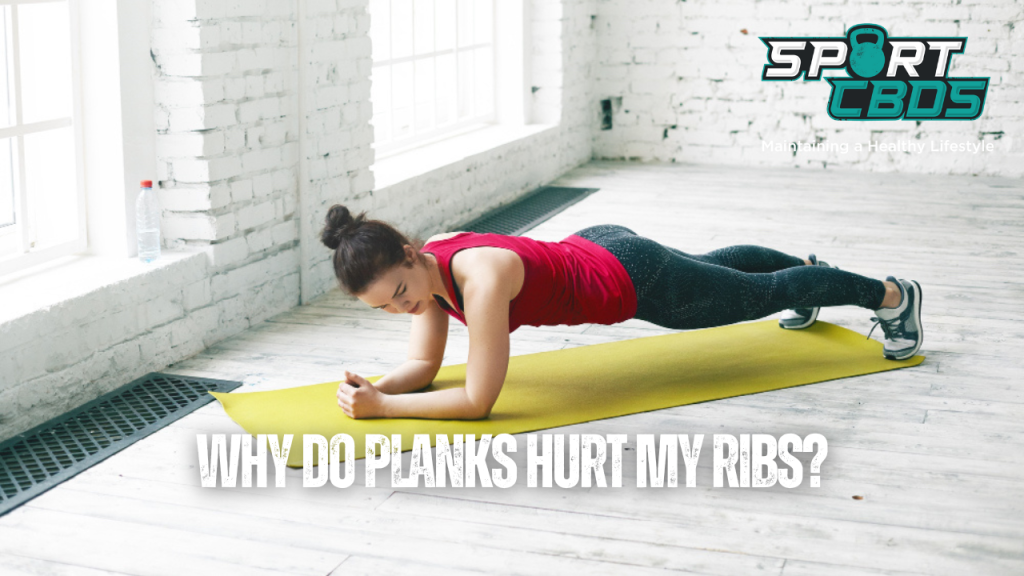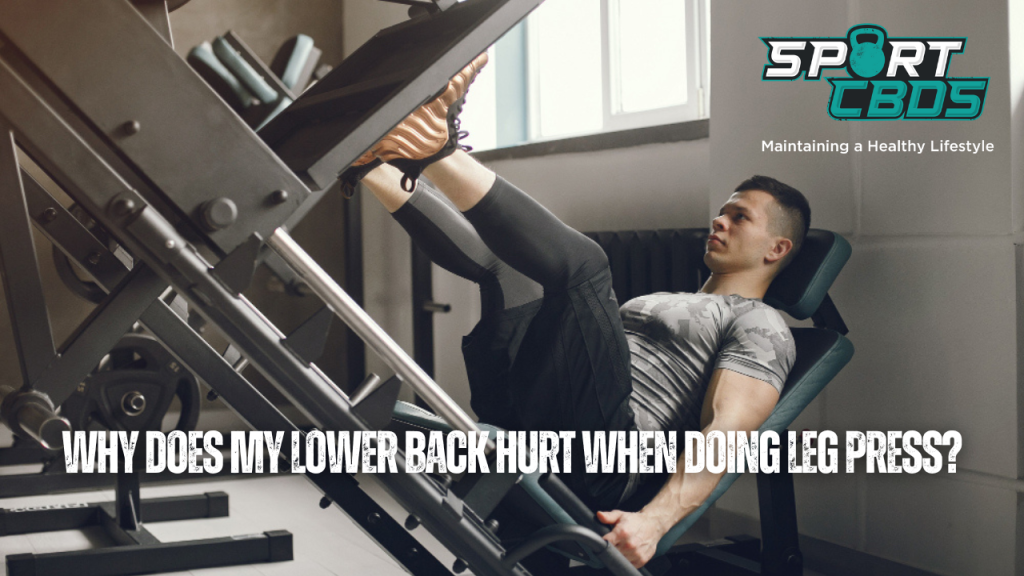
The Hidden Truth: Why Do Planks Hurt My Ribs?
Planks are a popular exercise in fitness routines worldwide, known for their ability to strengthen the core and improve overall body stability.
However, a common question that arises among fitness enthusiasts is, “Why do planks hurt my ribs?”
This article aims to delve into the science behind this phenomenon and shed light on the impact of planks on the body. It’s crucial to understand this to ensure a safe and effective workout routine.
Why Do Planks Hurt My Ribs?
Planks can cause discomfort or pain in the ribs due to several factors. Firstly, the plank position puts significant pressure on the costochondral joints, where the ribs connect with the sternum. This pressure intensifies as you lift your body from the floor during a plank. Secondly, planks can lead to rib cage compression or depression, especially when performed with improper form or overexertion. This can limit your breathing and your ability to engage your core effectively. Additionally, the exertion of the abdominal muscles during planks can extend to the rib muscles, causing discomfort. This is further compounded by Delayed Onset Muscle Soreness (DOMS), a common occurrence after intense workouts like planks. Lastly, a common issue related to planks is rib flare, where the lower part of the rib cage pushes outward, leading to discomfort and potential injury. Understanding these factors can help you adjust your plank form and technique to minimize discomfort and maximize the effectiveness of the exercise.
Understanding Planks
Planks are a type of isometric exercise, which means they involve maintaining a position for a certain period. The primary purpose of planks is to strengthen the core muscles, which include the rectus abdominis, transverse abdominis, obliques, and the muscles in the lower back.
When performed correctly, planks can offer numerous benefits. They can improve posture, enhance balance, and contribute to a toned abdomen. However, it’s essential to understand that planks are a full-body exercise. While they primarily target the core, they also engage other muscles in the body, including those in the shoulders, arms, and, notably, the rib cage.
The rib cage plays a crucial role in planking. It provides the necessary support and stability to maintain the plank position. However, this engagement of the rib cage can sometimes lead to discomfort or pain, leading many to wonder why planks hurt their ribs.
In the next sections, we’ll explore the impact of planks on the rib cage, the role of abdominal muscles, and the concept of Delayed Onset Muscle Soreness (DOMS). We’ll also discuss a common issue related to planks – rib flare, and how to prevent it. By understanding these aspects, you can ensure a safer and more effective workout routine.
Stay tuned as we delve deeper into the science behind planks and their impact on your ribs.
The Impact of Planks on the Ribcage
When performing a plank, the body is suspended in a horizontal position, supported by the arms and toes. This position puts a significant amount of pressure on various parts of the body, including the ribcage.
The costochondral joints, where the ribs connect with the sternum, experience a searing pressure during planks. This pressure is a result of the body’s weight and the force of gravity, which intensifies as you lift your body from the floor during a plank.
In addition to the pressure on the costochondral joints, planks can also lead to rib cage compression or depression. This occurs when the rib cage is pushed inward or downward, limiting your breathing and your ability to engage your core effectively. According to Ormeau Physio, this rib cage compression or depression is often a result of improper plank form or overexertion during the exercise.
To avoid these issues, it’s crucial to maintain proper form during planks. This includes keeping the body in a straight line, engaging the core, and ensuring that the body’s weight is evenly distributed.
Related: Is it Possible to Have Abs and Be Fat?
The Role of Abdominal Muscles
The abdominal muscles play a significant role in performing planks. They provide the strength and stability needed to maintain the plank position. However, the exertion of these muscles can sometimes extend to the rib muscles, causing discomfort or pain.
This extension of exertion to the rib muscles is a common occurrence during abdominal exercises like planks and sit-ups. It’s a result of the close connection between the abdominal muscles and the rib muscles, which work together to provide stability and movement to the upper body.
In addition to this, the abdominal muscles can also exert a lever action on the ribs during planks. This lever action occurs when the abdominal muscles pull on the ribs at the point of attachment, leading to discomfort or pain.
Understanding these aspects of abdominal muscle exertion can help you adjust your plank form and technique to minimize discomfort and maximize the effectiveness of the exercise.
Delayed Onset Muscle Soreness (DOMS) and Planks
Delayed Onset Muscle Soreness (DOMS) is a common phenomenon experienced after performing a new or intense workout. It refers to the muscle pain and stiffness that sets in 24 to 48 hours after the exercise. DOMS is caused by microscopic damage to muscle fibers during exercise, especially when the workout involves eccentric movements or high-intensity activities like planks.
DOMS can be a reason for rib pain after performing planks. The intense engagement of the core and rib muscles during planks can lead to muscle soreness, which can manifest as rib pain. This is especially common among individuals who are new to planks or those who have recently increased their plank intensity or duration.
To manage DOMS, it’s recommended to:
- Gradually increase the intensity and duration of your workouts
- Ensure proper form and technique during exercise
- Include adequate rest and recovery periods in your workout routine
- Stay hydrated and maintain a balanced diet
Rib Flare: A Common Issue with Planks
Rib flare refers to the outward pushing of the lower part of the rib cage. It’s a common compensation pattern during planks, especially when the core muscles are not adequately engaged. Rib flare can lead to an arching of the lower back, which can cause discomfort and increase the risk of injury.
Preventing rib flare during planks involves proper engagement of the core muscles and maintaining a neutral spine. This can be achieved by:
- Drawing in the navel towards the spine during the exercise
- Keeping the glutes and abdominal muscles engaged
- Ensuring that the hips, torso, and shoulders are aligned
By understanding and addressing these issues, you can perform planks more effectively and safely, reducing the risk of rib pain and other discomforts.
Related: Why Do Hanging Leg Raises Hurt My Back?
FAQs
Can planking cause costochondritis?
While planking doesn’t directly cause costochondritis, the intense pressure on the costochondral joints during planks can potentially contribute to inflammation in these areas, leading to costochondritis. It’s essential to maintain proper form and avoid overexertion during planks to minimize this risk.
Why is planking not good for you?
Planking is generally a safe and effective exercise when performed correctly. However, improper form, overexertion, or pre-existing health conditions can lead to issues like rib pain, back pain, or muscle strains. It’s always recommended to learn the correct form and gradually increase the intensity of your workouts to avoid these issues.
Why does my chest hurt doing planks?
Chest pain during planks can be due to various reasons, including pressure on the costochondral joints, rib cage compression, or the exertion of the abdominal muscles extending to the rib muscles. Ensuring proper form and avoiding overexertion can help minimize this discomfort.
Do planks work the intercostal muscles?
Yes, planks do engage the intercostal muscles, which are located between the ribs. These muscles play a crucial role in stabilizing the upper body and assisting in the breathing process during planks.
Final Thoughts…
While planks are a highly effective exercise for strengthening the core and improving overall body stability, they can sometimes lead to rib pain due to the pressure on the costochondral joints, rib cage compression, and the exertion of the abdominal muscles.
Understanding these factors, along with concepts like Delayed Onset Muscle Soreness (DOMS) and rib flare, can help you adjust your plank form and technique to minimize discomfort and maximize the effectiveness of the exercise.
Remember, proper form, gradual progression, and adequate rest are key to a safe and effective workout routine.
Do planks hurt your ribs and have these tips helped? Let us know in the comments below.
If you enjoy sport and use CBD to help with your recovery in between gruelling workouts, then you are in the right place. Here at Sport CBDs, we train hard and recover the best way possible…
We have regular workouts (check out the YouTube channel) and health & fitness products to help you gain that edge!
If you wanted to check out the reputable CBD we have on offer here at the site, then please head to the Sport CBDs Store (CLICK HERE). We also do fitness clothing and yoga accessories too.
Until next time, all the best…
Lee
Founder – Sport CBDs
Featured Image Attribution – Image by shurkin_son on Freepik


